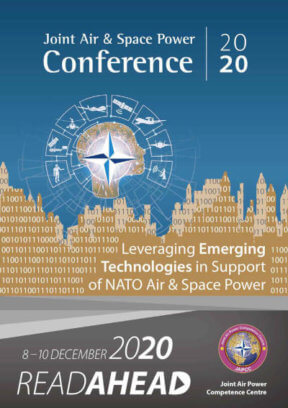Introduction
According to the US Department of Defense’s 2018 National Defense Strategy, ‘we are facing increased global disorder, characterized by decline in the long-standing rules-based international order – creating a security environment more complex and volatile than any we have experienced in recent memory. Inter-state strategic competition, not terrorism, is now the primary concern in US national security’.1 A new phase has started for the US and NATO, a phase that will be characterized by an intensification of strategic competition with several rivals.2 This competition is expected to take place mainly below the threshold of the recognised armed conflicts to which one has long been accustomed, in an area that is sometimes referred to as the ‘gray zone’ between peace and war.3 Gray zone can be described as a zone in which tactics such as subversion of political systems, psychological warfare, and secret and informative paramilitary operations are used to affect public perceptions and exert influence, on and through, instruments of power. American analysts have shown that some of the tactics of the gray zone which have been employed by Russia and China are relatively new in shape and effect, and significantly different from each other.4 This diversification presents a differentiation of the scope of the threat posed, as well as types of potential responses, and represents a serious strategic issue for the Alliance. Giving NATO a coherent competition strategy will require integrating all of instruments of power – diplomatic, information, military, and economic. NATO must be ready to address different aspects: hybrid operations, technological improvements in conventional forces, and prevention of escalation to use of nuclear weapons. One of the fundamental aspects that can contribute to success in the gray zone is successfully competing in the Information environment. This will also include the Electromagnetic Spectrum (EMS), which is indispensable in modern military operations. This results in unavoidable questions as to how NATO secures and exploits Information, and Information Flow, and in which way this contributes or affects Air and Space capabilities.
A New Way to Plan and Execute Operations
In future military operations, the way in which commanders understand, visualize, and describe the battlefield to their subordinate units will be a determining factor for achieving victory. The rapidity and availability of information sharing will be crucial to speed up the decision-making process, exploit the initiative, and create a position of relative advantage. As stated by David G. Perkins, a retired United States Army General, ‘… interoperability of information … means shared appreciation of Command and Control (C2) as a weapon system, a common sense of which data are critical, and how to protect and leverage that data …’5 Competing in the information environment will include the struggle to keep information flowing, to safeguard the integrity of information, and to deny the use of information to opponents. This strongly binds the information flow on access to, security of, and control of the EMS through which the information flow occurs. The 2018 US National Defense Strategy anticipates that Anti-Access and Area-Denial (A2/AD), among all, is one of the critical issues that will be dealt with in the event of a high-end conflict with peer adversaries.6 NATO must be ready to develop a new approach to battle management and the supporting C2. This approach should enable rapid planning and execution of operations, using the capabilities available through all operational domains in a synchronized, cooperative, and efficient manner. Allies also need to be able to combine all datasets, and rapidly interpret all information available to improve situational awareness and provide better information to strategic, operational, and tactical decision-makers. New solutions must be found in order to allow the Alliance to rapidly find, fix, and engage the relocatable systems which competitors employ for creating robust A2/AD networks. The US Joint All Domain Command and Control (JADC2) concept embraces all these ideas. More than just new equipment, JADC2 is a new approach to C2. Unlike the existing approach, which is still a ‘system of deconfliction’, JADC2 is an innovative ‘system of integration’.7 Almost the same operative philosophy is expressed by the concept called ‘Mosaic Warfare’. Developed by the Defense Advanced Research Projects Agency (DARPA), ‘Mosaic Warfare’ creates a force package by putting together all warfighting platforms. A new strategy that will enable Allies to overwhelm enemy forces by sending a huge quantity of weapon and sensor data, and create a complexity that can be turned into an asymmetric advantage.8 NATO must understand the information environment, be prepared to compete when it is contested, and rapidly identify and counter malicious actions. Moreover, NATO must develop and adopt new flexible C2 designs, and better-integrated communications systems able to merge all available forces in all operational domains.9
NATO Electromagnetic Spectrum Strategy
NATO recognizes and reaffirms that its military freedom of action on the contemporary battlefield is only guaranteed if a sufficient degree of superiority within the electromagnetic spectrum is maintained.10 The EMS is a key element of NATO armed forces strategy with which deterrence and defence can be achieved with respect to the three core tasks of the Alliance (Collective Defence, Crisis Management, and Cooperative Security). NATO EMS Strategy aims to exploit, access, and control the EMS where and when needed to achieve NATO Military Strategic objectives; and ensure it will remain the superior military force, postured to take advantage of the EMS with the ability to exploit, mask, and manoeuvre within a congested and contested electromagnetic environment (EME).11 NATO’s strategy proposes to revitalize realistic collective training and exercises under contested EME conditions, reinvigorate an institutional commitment to personnel capacity, training, and education across the range of EMO and continue to invest in essential capabilities. The strategy’s overarching goals are: (1) institutional awareness and advocacy, (2) effective joint EMO, and (3) robust EMO capabilities. EMO includes any kind of activities which deliberately transmit and receive electromagnetic energy in the EME for military operations12 and involves multiple disciplines such as Spectrum Management, Navigation, Electronic Surveillance (ES), Electronic Attack (EA), Electronic Defence (ED), and Signal Intelligence (SIGINT). EA, ED, and ES collectively comprise Electronic Warfare (EW).13 Today, EMO represents the real cornerstone to link and integrate military forces not only within each operational domain but also across all domains by enabling them to develop Multi-Domain Operations (MDO); a new paradigm in developing future JADC2. While NATO is still pursuing the concept of MDO or JADC2, superiority may not be achieved in the future battlefield unless EMO can be effectively employed in the EME.
Conclusion
One of the most important characteristics of air power is speed. Nevertheless, it seems clear that in the future, more than by the speed of its flying systems, air power will be affected by its speed and ability to communicate and to transmit, evaluate and use available information. Highly flexible and agile structures and technologies applied to modern concepts of C2, such as JADC2 and ‘Mosaic Warfare’, are needed. Such systems must be able to integrate all information available, rapidly detect changes in the situation and therefore provide a timely, powerful, and coherent response. ‘Future commanders will have a profound breadth and depth of information and access to capabilities providing cross-domain effects, manoeuvre, and fires’.14 Information competition and dominance in the electromagnetic spectrum will play an important strategic role. This necessarily causes questions as to how NATO secures and exploits information and information flow. Considering the impact of the information competition across all domains of operations, potential challenges include: the necessity to increase expenditures on research and innovation in order to bridge capability gaps that have arisen due to the tremendous growth of adversaries’ capabilities; the evolution of new technologies and emerging enablers that support our ability to secure and control the EMS; and the increasing the resiliency of Space, Cyberspace, and legacy infrastructures. These emerging challenges will be thoroughly explored during the upcoming JAPCC Air and Space Power Conference. The following articles will introduce the reader to some important aspects of these challenges which will be the focus of a panel discussion during the JAPCC Conference:
- Lt Col Panagiotis Stathopoulos, GRC AF, JAPCC, Electronic Warfare Subject Matter Expert, will highlight the high value of EMS in support of Multi-Domain Operations by discussing the necessity of integrating EMS disciplines and functions in a synergistic and symbiotic approach. More importantly, he details why NATO needs to integrate and unify all EMS capabilities, entities, and disciplines under a single domain of operations.
- Mr Stephen Tournageau, Vice President, Warrior Support Solution, LLC deals with the subject of the EMS dependency. His paper elucidates the potency of the threat of spectrum denial. It also reveals how nearly all militaryies’ Tactics, Techniques, and Procedures (TTPs) are 100% dependent on the availability of the spectrum. Mr. Tournageau explains the need to understand how to operate on the modern battlefield and proposes new TTPs, based on some of those from the Cold War era, centred on using our current capabilities to operate in a denied spectrum environment.
- Ms Whitney McNamara summarizes the article ‘Winning the Invisible War: Gaining an Enduring Advantage in the EMS’ (Clark B. et al, 2019). She presents a new approach to EMS operations focused on asymmetries between the US and opposing militaries. The report recommends how the US and its allies can use these asymmetries to gain an advantage against Russia and China in the electromagnetic spectrum, including capability requirements, operational concepts, and an overall electromagnetic spectrum strategy.
- Général d’armée aérienne André Lanata introduces the themes addressed during the last SACT’s Conference ‘The NATO Information and Communicators’ Conference (NICC) held in September 2019. In it will be found food for thought regarding the modern interconnected and networked world and the important role played by information, or more accurately, disinformation used as instrument by our adversaries in their approach.
- Last but not least, the Defence Advantage Research Projects Agency (DARPA) in its article ‘DARPA Tiles Together a Vision of Mosaic Warfare’, introduces this innovative concept. A new revolutionary warfighting platform built upon an interconnected and interoperable force package able to leverage the best characteristics of different platforms. A kind of system of systems characterized by dedicated new interfaces, communications links, and precision navigation and timing software that can allow all the platforms to work together. This could easily overwhelm the enemy forces creating an asymmetric advantage, but there are still many problems to solve because, as known, ‘today’s weapon systems are not built to function this way’.
While awaiting the conference, these readings will propitiously present the arguments to the reader and at the same time stimulate a constructive and highly desirable curiosity.









